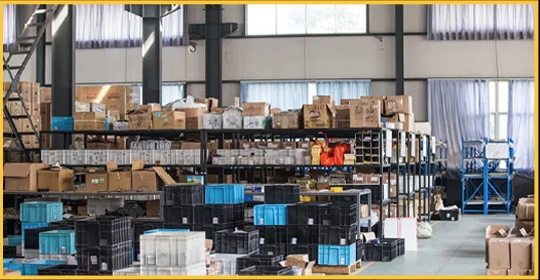
-
 Afrikaans
Afrikaans -
 Albanian
Albanian -
 Amharic
Amharic -
 Arabic
Arabic -
 Armenian
Armenian -
 Azerbaijani
Azerbaijani -
 Basque
Basque -
 Belarusian
Belarusian -
 Bengali
Bengali -
 Bosnian
Bosnian -
 Bulgarian
Bulgarian -
 Catalan
Catalan -
 Cebuano
Cebuano -
 Corsican
Corsican -
 Croatian
Croatian -
 Czech
Czech -
 Danish
Danish -
 Dutch
Dutch -
 English
English -
 Esperanto
Esperanto -
 Estonian
Estonian -
 Finnish
Finnish -
 French
French -
 Frisian
Frisian -
 Galician
Galician -
 Georgian
Georgian -
 German
German -
 Greek
Greek -
 Gujarati
Gujarati -
 Haitian Creole
Haitian Creole -
 hausa
hausa -
 hawaiian
hawaiian -
 Hebrew
Hebrew -
 Hindi
Hindi -
 Miao
Miao -
 Hungarian
Hungarian -
 Icelandic
Icelandic -
 igbo
igbo -
 Indonesian
Indonesian -
 irish
irish -
 Italian
Italian -
 Japanese
Japanese -
 Javanese
Javanese -
 Kannada
Kannada -
 kazakh
kazakh -
 Khmer
Khmer -
 Rwandese
Rwandese -
 Korean
Korean -
 Kurdish
Kurdish -
 Kyrgyz
Kyrgyz -
 Lao
Lao -
 Latin
Latin -
 Latvian
Latvian -
 Lithuanian
Lithuanian -
 Luxembourgish
Luxembourgish -
 Macedonian
Macedonian -
 Malgashi
Malgashi -
 Malay
Malay -
 Malayalam
Malayalam -
 Maltese
Maltese -
 Maori
Maori -
 Marathi
Marathi -
 Mongolian
Mongolian -
 Myanmar
Myanmar -
 Nepali
Nepali -
 Norwegian
Norwegian -
 Norwegian
Norwegian -
 Occitan
Occitan -
 Pashto
Pashto -
 Persian
Persian -
 Polish
Polish -
 Portuguese
Portuguese -
 Punjabi
Punjabi -
 Romanian
Romanian -
 Russian
Russian -
 Samoan
Samoan -
 Scottish Gaelic
Scottish Gaelic -
 Serbian
Serbian -
 Sesotho
Sesotho -
 Shona
Shona -
 Sindhi
Sindhi -
 Sinhala
Sinhala -
 Slovak
Slovak -
 Slovenian
Slovenian -
 Somali
Somali -
 Spanish
Spanish -
 Sundanese
Sundanese -
 Swahili
Swahili -
 Swedish
Swedish -
 Tagalog
Tagalog -
 Tajik
Tajik -
 Tamil
Tamil -
 Tatar
Tatar -
 Telugu
Telugu -
 Thai
Thai -
 Turkish
Turkish -
 Turkmen
Turkmen -
 Ukrainian
Ukrainian -
 Urdu
Urdu -
 Uighur
Uighur -
 Uzbek
Uzbek -
 Vietnamese
Vietnamese -
 Welsh
Welsh -
 Bantu
Bantu -
 Yiddish
Yiddish -
 Yoruba
Yoruba -
 Zulu
Zulu


Dec . 24, 2024 18:54 Back to list
push rod pull rod
Understanding Push Rods and Pull Rods in Mechanical Systems
In the dynamic world of mechanical engineering, various components play critical roles in ensuring the efficiency and functionality of machines. Among these components are push rods and pull rods, which are essential in many applications, from automotive engines to industrial machinery. Understanding the differences and applications of these rods is vital for anyone interested in mechanical design and engineering.
What Are Push Rods and Pull Rods?
Push rods and pull rods are mechanical components used to transfer force or motion. A push rod is designed to transmit force in a linear direction, pushing it away from the source. In contrast, a pull rod is meant to draw or pull a load towards the source of motion. The distinction lies in their operation push rods exert force outward or resist external forces, while pull rods create tension or allow movement towards them.
Applications in Different Industries
1. Automotive Engineering In automotive applications, push rods are primarily found in valve-actuating mechanisms of internal combustion engines. They connect the rocker arms to the engine's valves. As the camshaft rotates, it pushes the push rod, which in turn lifts the valves to let in air and fuel or expel exhaust gases. Pull rods, on the other hand, may be used in suspension systems, particularly in high-performance vehicles, to adjust ride height and support adjustments in the suspension geometry.
2. Aircraft Design In aviation, similar principles apply. Push rods are often used in the control systems of aircraft, where they convert the pilot's control inputs into movement of the control surfaces like ailerons and elevators. Pull rods might be used in the same systems but in applications where tension needs to be maintained, such as in the landing gear retraction systems.
push rod pull rod

3. Robotics and Automation In robotics, push and pull rods can be found in various actuating mechanisms. Linear actuators often utilize these rods to perform precise movements. For instance, push rods can be employed in pick-and-place robots to move components to different locations, while pull rods can be utilized in gripping systems where controlled force is necessary to handle delicate items without causing damage.
Design Considerations
When designing systems that utilize push and pull rods, several factors must be taken into account. The material used for these rods is crucial; it must withstand the forces applied without bending or breaking. Steel is a common choice due to its strength, while lightweight materials like aluminum or composites may be chosen for applications where weight is a concern.
The length and diameter of the rods are also essential to ensure they can transmit the required force effectively. Engineers often calculate the moment arm and leverage effects to determine the ideal dimensions.
Conclusion
Push rods and pull rods are integral components in many mechanical systems, serving vital functions across various industries. Their ability to transmit force and motion is essential for the proper operation of engines, aircraft, and robotic systems. By understanding the differences, applications, and design considerations of these rods, engineers can create more efficient and reliable machines. As technology continues to advance, the role of push and pull rods will likely evolve, adapting to new challenges and innovations in the field of mechanical engineering.
Latest news
What Are Construction Tools and How Are They Used?
NewsJul.11,2025
Professional-Grade Duct Rodding Tools for Superior Cable Installation
NewsJul.11,2025
Enhancing Safety and Efficiency with Modern Hot Stick Solutions
NewsJul.11,2025
Empowering Cable Installation with Advanced Rodder Solutions
NewsJul.11,2025
Elevate Your Cable Installation Projects with Cable Pulling Tools
NewsJul.11,2025
Efficient Cable Handling Solutions: Cable Rollers for Sale
NewsJul.11,2025











